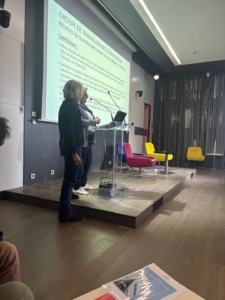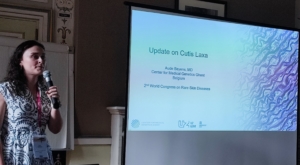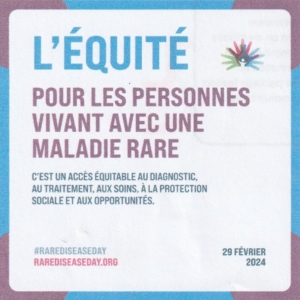Astrazeneca awarded its « Scientific Prize 2024 » to Pr Bert Callewaert .
On 12th December 2024, Astrazeneca awarded its « Scientific Prize 2024 » to Pr Bert Callewaert .

We are very happy and proud that Pr Callewaert is one of the rare worldwide experts on Cutis Laxa. He is awarded the prize for his research on congenital rare diseases of elastic fibers, including Cutis Laxa and profibrotic diseases such as Myhre’s syndrome. His research has contributed to the molecular and clinical characterization of these diseases.

Together with his team, he works on very rare forms of Cutis Laxa and identified several new genes and entities within the Cutis Laxa spectrum.
« Elastic fibers play a crucial role in the elasticity and mechanical properties of tissues such as the skin, lungs and blood vessels. We studied cutis laxa, a group of conditions characterized by loose and excessive skin folds, and Myhre’s syndrome, in which tissues harden or heal, to understand the structure and function of elastic fibers. This knowledge offers the possibility of finding treatments for age-related disorders. » (Pr Bert Callewaert ©Fondation AstraZeneca)
The AstraZeneca Award recognizes the innovative nature of his work and his contribution to the advancement of science.
🏆



























